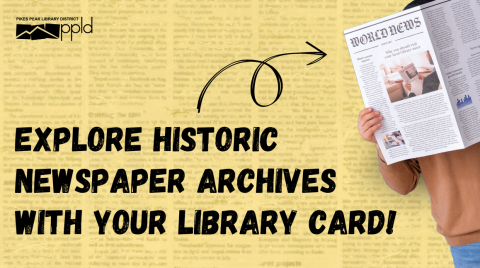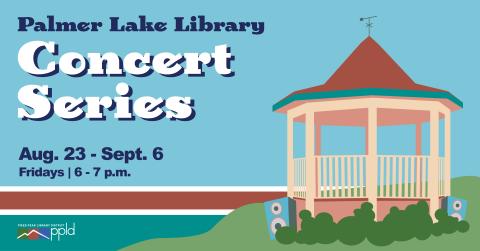Categories

Back to school season is upon us. As students prepare for academic success this year, they should keep Pikes Peak Library District (PPLD) in mind as an essential tool. We have a wide variety of resources to support you in your education journey this year! Check out our Homework Resource Guide or read below to see how the Library supports students of all ages.
First stop: get your card.
A library card is your key to access a world of homework help and academic resources. You can access the resources on this page from any PPLD location, but a library card will allow you to use them from anywhere. Anyone of any age can sign up for a card.
- Stop by your nearest or favorite Library location to sign up or print out an application ahead of time to bring with you.
OR- Apply for a card online!
- You must live within the Pikes Peak Library District, which is most of El Paso County, except for Security/Widefield. Residents of Security/Widefield and other counties can still obtain a Colorado Library Card to access PPLD resources but might not be able to access many of our resources outside of a Library location. See our Library Card Policy for more information.
- You will need proof of your current address and a photo ID.
- If you're 15-years-old or younger, you must be accompanied by a parent or guardian with the documentation listed above or an existing PPLD card.
Brainfuse
If you’ve ever felt like you were bad at science or could use some homework help, check out HelpHow from Brainfuse. This database offers live homework help and skills building online with expert tutors in math, science, social studies, and English, plus writing and reading assistance. Students of all ages will benefit, as this resource is designed for kindergarten through adult students. Tutors are available online daily from 2 – 11 p.m.
Peterson's Test Prep
Students preparing for college or studying for standardized tests will benefit from Peterson's Test Prep. This database provides study guides and timed practice tests for all major college entrance exams and standardized tests, plus college planning, scholarship search, and career exploration tools.
Databases
Library databases are a great place for learning for all ages. We have databases for kids to explore as they learn and develop internet search skills at the same time, and databases where older students can find references for essays, book reports, and other projects. Here are some of our databases that students will find useful (visit our databases page for more):
- Academic Search Premier: Great for research, essays, and other projects, this database contains more than 2,000 journals, including more than 1,550 peer-reviewed titles. This multi-disciplinary database covers virtually every area of academic study.
- Consumer Health Complete: Students researching health-related topics will find many resources in this database. Find comprehensive full-text articles for consumer-oriented health content covering all areas of health and wellness from mainstream medicine to the many perspectives of complementary, holistic, and integrated medicine.
- CultureGrams: Explore countries and cultures around the world and find information about the diversity and history of each U.S. state and the District of Columbia. Designed for upper elementary-aged children.
- Gale Virtual Reference Library: Search our entire collection of Gale eBooks on a variety of subjects, including history, science, government, and more. For elementary schoolers, use Gale In Context: Elementary.
- CustomGuide: Learn the basic technology skills you need for academic success. In this database you will find interactive online training for Microsoft Office software, including Excel, Outlook, PowerPoint, Windows, and Word.
- LinkedIn Learning: Dive into a world of infinite possibilities. LinkedIn Learning offers online video tutorials to help you learn creative, computer, and professional skills. You can also find videos for helpful topics like essay writing.
- Opposing Viewpoints in Context: Explore current events and controversial issues by researching multiple sides of a topic. This database aids students in writing argumentative essays and developing analytical thinking skills.
- Poetry & Short Story Reference Center: Get a head start on English Language Arts classes with essays analyzing poems and short stories, as well as access to hundreds of poems and short stories. This database also helps with understanding themes, poetic forms, movements, and more.
- Science Reference Center: Get easy access to hundreds of science articles. Designed to meet every student researcher's needs, Science Reference Center contains full text for more than 700 science encyclopedias and reference books, periodicals, science videos, and other sources.
Mango Languages
Ready to expand your horizons by learning a new language? Mango Languages features 70 language options, including 21 options for those learning English as a second language. Explore languages from Arabic to Yiddish in the comfort of your own home or download the app to learn on the go! Students can go at their own pace.
Workforce Readiness Training
Get ready to get a job or go to college! Work your way through modules focused on professionalism, communication, social skills, and goal setting to prepare yourself for the next big step in your life. Individuals under age 15 are encouraged to focus on the “basic” training while older youth might find the “intermediate” training more appropriate.
The Homeschool Hub
Our Homeschool Hub has a wealth of resources and tools to support homeschoolers. Click on “Resources” to find information on getting started; Colorado homeschool law, online courses, concurrent enrollment, and enrichment programs; tutoring; extracurricular activities; support organizations; and more. You can also sign up for our homeschool newsletter to find out about upcoming homeschool programs at the Library such as Homeschool Book Blast and Homeschool Science Fair.
For Fun AND Learning!
eLibrary: More than Books!
Of course, the Library has books, music, movies, and more, both physical and digital, that students can access for school and fun. Browse Libby by OverDrive (eBooks and comics, eAudiobooks, eMagazines), Hoopla (music, TV shows and movies, eBooks and comics, eAudiobooks), AudioBookCloud (eAudiobooks), Freading (eBooks), Freegal (music), Kanopy (movies, TV shows, documentaries), Tumblebooks (eBooks for young readers), and more.
PPLD Kids
Looking for more learning resources for kids? You can find plenty of PPLD resources on our PPLD Kids page! Explore:
- Homework (search by subject to find databases, recommended websites, and more),
- Read (access booklists by grade level, genre, online resources, and more),
- Create (hands-on activities and websites),
- Parents & Educators (curated information source for adults).
PPLD Teens
Get homework help, book recommendations, virtual programs, research resources, and more on our PPLD Teens page!

Historic newspapers tell the stories of our collective past. Local papers show our regional history, while national and world-wide papers tell more widespread stories of the day. Whether you’re curious to know what happened on a given day in history or need resources for research projects, Pikes Peak Library District connects you with a variety of historic newspaper databases to get you connected with these stories. You can also find current and recent news in our newspaper database offerings.
For historic news, check the following databases:
- America’s News: This comprehensive news collection includes print and online-only newspapers, blogs, newswires, journals, and broadcast transcripts and videos from nine news sources, including three with a Colorado news focus.
- 19th Century U.S. Newspapers: Access over 28 million articles from nineteenth century newspapers, including rural and urban papers throughout the U.S.
- Newspaper Archive: As the largest online historical newspaper database, this database contains millions of newspapers from 1607 to present. Search by location (including Colorado), subject, date, or publication to find the stories you’re looking for.
- Newspaper Source: Search hundreds of U.S. newspapers by subject to find historic and recent articles.
For recent and current news, try:
- America’s News: In addition to historic newspaper and video clips, you can find papers from as resent as yesterday to get caught up on more timely events, including The Denver Post, The Gazette, USA Colorada, and other news outlets.
- New York Times: Our subscription to the New York Times is going digital! Discover a world of current news, games, cooking tips, and more.
- Newspaper Source: If you know what subject you want to find news on, use this database to search for articles published as recently as yesterday from hundreds of U.S. newspapers.
- Regional Business News: Looking for business news? Use this database to find business news from around the world over the past 10 years.
Looking for local news articles not found in our online newspaper databases? Try our Regional History & Genealogy department’s physical archive of historic microfilm.

Outdoor concerts return to Pikes Peak Library District this summer with three no-cost concerts! Bring your lawn chairs or blankets and join us at the Palmer Lake Village Green (66 Lower Glenway Street, next to Palmer Lake Library) for sunshine and music at the end of the summer. You’ll hear a variety of music, from big band to folk, and beyond. Everyone is welcome to attend these no-cost concerts.
The concerts are from 6 – 7 p.m. In the event of adverse weather, the concerts may be relocated to the Town Hall building adjacent to the Village Green or may be cancelled.
- The first concert on Fri., Aug. 23 features jazz and big band music by Academy Jazz Ensemble.
- The next concert will take place on Fri., Aug. 30 and feature folk music by Tender Foot Bluegrass.
- This year’s series will conclude on Fri., Sept. 6 with a performance by two-time Kerrville New Folk Finalist and Posi Award Winner Jeremy Facknitz (with David Siegel).



 Penrose Library will undergo the next stages of its improvement project starting on Mon., Jan. 6. The Library will remain open, but the Computer Lab will be closed during construction.
Penrose Library will undergo the next stages of its improvement project starting on Mon., Jan. 6. The Library will remain open, but the Computer Lab will be closed during construction.